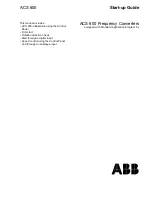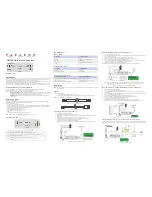
SYSTEM MAINTENANCE
40
Tri-Sensor Assembly
(#909-GO1
.
5) (Cable Ordered Separately)
Temperature Sensor Post
Salt Sensor Blades
Directional Flow Indicator
Tri-Sensor O-Ring (#19028)
Flow Paddle
View of locking
Quick-Connect head
Tri-Sensor Assembly
The Tri-Sensor Assembly is used to measure water
flow, salt level, and water temperature.
When the water flow reaches a minimum flow rate of
20 gpm (76 L/m), the flow paddle magnet closes a
micro-switch that is monitored by the Control Unit.
Note: The use of high strength magnet devices in the
close proximity of the Tri-Sensor can cause the flow
switch to function incorrectly.
The Control Unit uses dedicated salt sensor blades to
measure the level of salt in the water.
The Control Unit uses the temperature sensor to
determine the temperature of the water. This is
needed for the Patented Automatic Temperature
Compensation feature that automatically adjusts the
chlorine output for temperature variations. Less
chlorine is needed in cold water, so the chlorine
output is automatically reduced as the temperature
drops to avoid excess chlorine production. Similarly,
more chlorine is needed in warmer water and is
automatically adjusted higher. The temperature
sensor is also used for the Freeze Protection Feature
as described on pg. 38.
Removing\Inspecting\Cleaning the Tri-Sensor (Pump must be off)
! DANGER
Turn off the pump power at the circuit breaker before servicing this unit. Personal injury or
equipment damage could occur if the pump activates.
1.
Disconnect the Tri-Sensor cable from the Tri-Sensor. (Place the end of the cable out of the way, where it will stay dry
when the Tri-Sensor is removed.)
2.
Cover the contact pins on the Tri-Sensor with the dust cap to prevent damage and to keep them dry and clean.
3.
Remove the two (2) screws that retain the Tri-Sensor in the Tee joint on the Manifold.
4.
Note the orientation of the Directional Flow Indicator. The Tri-Sensor must be installed in the same orientation when it
is re-installed or replaced.
5.
The Tri-Sensor can now be pulled out of the Tee. Firmly grip the Tri-Sensor assembly. (This is typically done with a
large pair of channel lock pliers.) Twist the Tri-Sensor back and forth while simultaneously pulling the Tri-Sensor
straight out of the Tee joint.
Warning: The Tri-Sensor should not be pulled out at an angle, or the flow paddle or flow post will be damaged.
6.
Inspect the following on the flow switch. Verify that the thin metalic paddle is straight and free from erosion. Verify the
the long plastic post is straight and free of cracks. Do not twist or bend the paddle, or the long plastic post.
7.
Inspect the two salt sensor blades. The two blades should not have any mineral deposits (scale) or other debris on them.
If the blades need to be cleaned use the following method:
•
Do not use any metallic objects to scrape the blade surfaces or you will remove or damage the blade sensor coating.
•
To remove a calcium scale buildup, mix one (1) part Muriatic Acid into four (4) parts water. Mix the solution in a
small container high enough to cover the cell blades.
! WARNING
To avoid damaging splashes, always add acid to water, never water to acid.
•
Immerse the salt blades in the solution for up to 15 minutes. An effervescing action indicates the calcium is being
dissolved off of the blades.
•
Rinse with fresh water and re-inspect. Repeat the acid treatment if necessary.
8.
Check the tri-sensor assembly for any damage to the plastic housing and replace if needed.
Содержание Pool Pilot 75003
Страница 54: ......










































